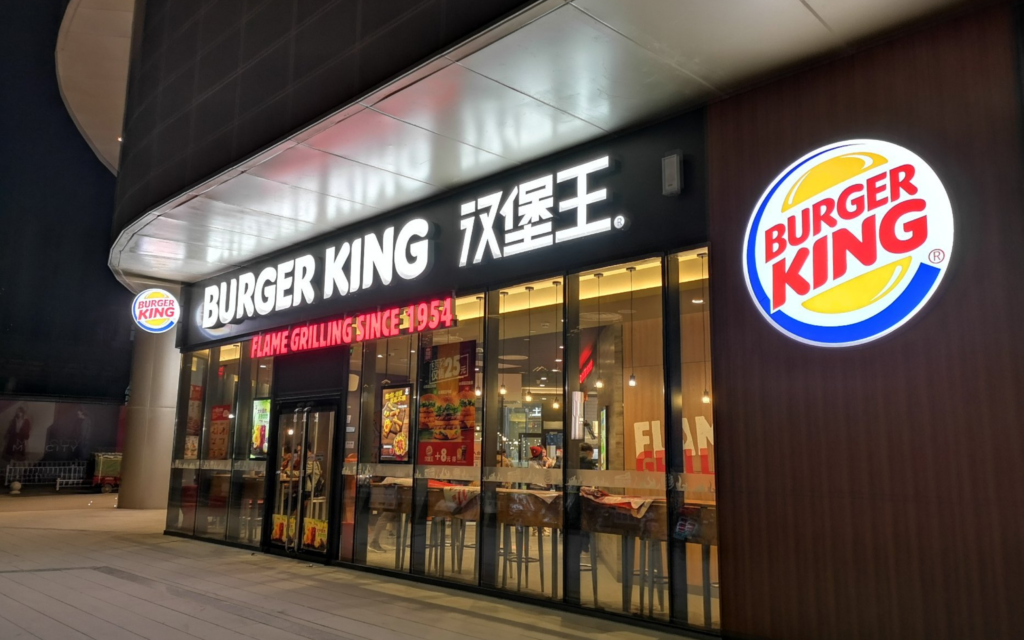TL;DR | China Market Entry Strategy
Entering the Chinese market offers immense potential for brands seeking growth in the world’s second-largest economy. With over 1 billion consumers, a rapidly evolving digital ecosystem, and rising demand across sectors like B2B, eCommerce, luxury, and hospitality, China remains a key driver of global business expansion. However, success requires local expertise, strong partnerships, influencer marketing, and deep cultural understanding. This guide from InfluChina outlines how to build an effective China market entry strategy—from localization and branding to KOL collaborations and long-term growth planning.
Entering the Chinese market has become an increasingly critical consideration for Western companies of all sizes. Despite the challenging global economic climate, exacerbated by the COVID-19 pandemic, China has maintained robust economic growth, with a GDP increase of 8.44% in 2021.
As the world’s second-largest economy, closely following the United States, China is poised to remain a significant engine of global growth for the next decade. For companies in the B2B sector in China, understanding how to penetrate this vast and complex market is essential.
China is poised to remain a significant engine of global growth for the next decade.

Several factors have contributed to making China an attractive destination for Western businesses. Rapidly evolving demographics, rising incomes, increased consumer spending, and an increasingly open business environment have all played a role in this shift. Additionally, the stagnation or decline of sales in their home markets has driven many US and European companies to prioritize China in their long-term global growth strategies.
However, successfully entering the Chinese market can be a daunting challenge for foreign companies, especially those with limited or no prior experience in the region. Understanding the nuances of Chinese business culture, navigating regulatory hurdles, and adapting to local market conditions are just a few of the complexities that companies must address.
1. Evaluating your Readiness to Enter the Chinese Market
Tapping into China’s ongoing economic growth offers a promising opportunity, but not every foreign brand is fully prepared to take this step. Successfully entering the Chinese market requires significant time, effort, and a substantial investment of resources.
Successfully entering the Chinese market requires significant time, effort, and a substantial investment of resources.
The financial commitment can vary greatly depending on the size of your business. For instance, your marketing budget might need to range anywhere from $25,000 to over $1 million. The timeline for reaching this level of investment will depend on your business objectives and how aggressively you intend to pursue the market.
For instance, your marketing budget might need to range anywhere from $25,000 to over $1 million.

It’s also crucial to consider consumer preferences when planning your entry strategy. To gauge whether your target audience in China is already interested in your products or services, you can check Chinese social media platforms for mentions of your brand or explore e-commerce sites to see if your products are being resold unofficially. These insights can help you assess the potential demand and better prepare for a successful market entry.
2. Conduct Comprehensive Market Research and Preliminary Analysis
If you’re looking to enter the Chinese market successfully, gaining a deep understanding of local consumer behavior is essential. Before you begin seeking local partners or selecting distribution channels, it’s crucial to conduct thorough market research in China to determine whether there is genuine interest in your products or services among Chinese consumers.
Your research should also assess the competitive landscape. Determine whether your target market is already dominated by a well-established domestic competitor. For example, consider Amazon’s experience when it entered China through a joint venture with Joyo.com in 2017. Despite its global brand strength, Amazon struggled to compete with popular local marketplaces like Tmall and JD.com, ultimately leading to its exit from the Chinese online retail market in 2019.
If your research indicates that your target market isn’t dominated by a strong local competitor, that’s an encouraging sign. However, if there is strong competition, take the time to explore social media platforms to see if consumers are expressing dissatisfaction with existing options—this could present an opportunity for your brand.

Your research should also assess the competitive landscape. Determine whether your target market is already dominated by a well-established domestic competitor.
Another positive indicator of demand for your products in China is the presence of “Daigou” sellers. These individuals purchase products abroad in bulk to resell in China, highlighting a potential market for your offerings.
It’s important to note that Chinese consumers don’t typically rely on search engines like Baidu to find products or brands. Therefore, when conducting your market research, prioritize e-commerce and social media platforms such as WeChat, Weibo, Red Book, Douyin, Kuaishou, and Bilibili. These platforms are vital for understanding consumer preferences and market trends in China.
When conducting your market research, prioritize e-commerce and social media platforms such as WeChat, Weibo, Red, Douyin, Kuaishou, and Bilibili.
3. Building Strong Domestic Partnerships & Collaborating with Local Experts
One of the primary challenges foreign companies face when entering the Chinese market is the lack of local knowledge, which is critical for achieving sustainable growth. To navigate this complex environment successfully, partnering with a marketing agency that is deeply familiar with the Chinese market is highly advisable.
While working with a top-tier marketing agency may seem like a significant initial investment, this expense is justified by the long-term benefits. A knowledgeable agency can help you avoid costly missteps by ensuring that your branding, messaging, and campaigns are culturally resonant and strategically aligned with local market dynamics. In the dynamic and sometimes unpredictable Chinese market, having robust marketing support can be the difference between success and failure.

In the dynamic and sometimes unpredictable Chinese market, having robust marketing support can be the difference between success and failure.
Beyond marketing expertise, a reliable trading partner (TP) is also crucial for foreign enterprises. These local companies act as your gateway to China’s major e-commerce platforms, such as Taobao, Tmall, and JD.com. They manage your distribution channels, oversee your online store operations, handle inventory, and coordinate logistics. With the rapid growth of e-commerce in China, having a capable TP partner is essential for seamlessly integrating into the market and scaling your operations effectively.
For brands looking to navigate these complexities, exploring tailored China retail solutions can be a smart move. These solutions combine local insight, operational support, and retail strategy to help businesses succeed in a competitive and fast-evolving marketplace.
With the rapid growth of e-commerce in China, having a capable TP partner is essential for seamlessly integrating into the market and scaling your operations effectively.
In today’s China, where consumer preferences and market dynamics can shift rapidly, collaborating with local experts—particularly in marketing—is not just beneficial; it’s essential for any foreign company aiming to thrive in this vast and complex market.
4. Localize your Brand to Successfully Enter the Chinese Market
When you enter the Chinese market, it becomes clear that a localized brand is essential for establishing a strong presence and resonating with Chinese consumers. One critical element of this localization is your trading name. It’s important to recognize that not all Chinese consumers speak English, making it crucial for your brand name to be both understandable and memorable in Mandarin.

It's important to recognize that not all Chinese consumers speak English, making it crucial for your brand name to be both understandable and memorable in Mandarin.
Your brand name should be easy to pronounce in Mandarin, carry positive connotations, and leave a lasting impression. This goes beyond simple translation—it’s about creating a meaningful cultural connection. For instance, the brand “Burger King” adapted its name to 汉堡王 (Hànbǎo Wáng), which directly translates to “Hamburger King.” This name not only maintains the brand’s identity but also resonates with local consumers by being easy to pronounce and relevant to the product.
In addition to your brand name, all your brand content on your website, social media profiles, and e-commerce platforms should be in the local language. This is vital for engaging Chinese consumers effectively and ensuring your messaging is clear and impactful.
When planning to enter the Chinese market, it’s also essential to consider intellectual property rights (IPR). China operates on a ‘first-to-file’ basis for patents and trademarks, meaning that the first entity to register the name gains the rights. This can pose challenges if a local company registers your brand name before you do. To protect your brand, it’s crucial to register your trademarks and patents across various categories as early as possible.

China operates on a ‘first-to-file’ basis for patents and trademarks, meaning that the first entity to register the name gains the rights.
5. Choosing the right Marketing and Sales Channels
When planning to enter the Chinese market, it’s essential to have a deep understanding of the country’s rapidly evolving business landscape. A crucial decision for any foreign brand is whether to focus on establishing a physical presence through brick-and-mortar stores or to prioritize e-commerce platforms like Tmall, JD.com, or emerging players like Pinduoduo.
E-commerce is undeniably a powerhouse in China, with platforms like Tmall and JD.com dominating the online retail space. However, having a physical presence—whether through flagship stores, pop-up shops, or showroom experiences—can significantly boost your brand’s visibility and credibility. Physical stores offer consumers the opportunity to engage with your brand in person, which can be particularly important in establishing trust, especially for new entrants.
If your strategy leans towards online sales channels, be prepared for a thorough and potentially lengthy preparation process. Successfully launching on major Chinese e-commerce platforms involves navigating trademark registrations, securing necessary licenses, and setting up a reliable supply chain. This process can take three to six months or even longer, depending on the complexity of your product offerings and the regulatory environment. Partnering with a trusted China E-commerce Agency can simplify this process, providing localized expertise, platform setup, and ongoing operational support tailored to your brand’s goals.

Successfully launching on major Chinese e-commerce platforms involves navigating trademark registrations, securing necessary licenses, and setting up a reliable supply chain.
Selecting the right social media platforms is equally critical when you enter the Chinese market. The choice of platform should align with your brand’s target audience and product type. For instance, fashion and beauty brands tend to thrive on platforms like Weibo and Xiaohongshu (Little Red Book), where influencer marketing and user-generated content drive consumer engagement. Meanwhile, brands in the tech or gaming sectors might find better traction on platforms like Bilibili or Douyin, which cater to younger, more tech-savvy users.
Moreover, timing your market entry around major e-commerce events like Singles’ Day (11/11) or the Spring Festival can provide a significant boost to your brand’s visibility and sales. These events are cultural phenomena in China, with consumer spending reaching its peak. For example, during the 2023 Singles’ Day event, Alibaba and JD.com collectively generated over $156 billion in sales, showcasing the immense potential these events hold for new market entrants.
6. Developing a Long-Term Strategy to Enter the Chinese Market
To successfully enter the Chinese market, your long-term strategy must align with the digital habits of your target consumers. Focus on the platforms they use, engage with influencers, leverage content marketing, and explore live streaming opportunities to connect with your audience.
To successfully enter the Chinese market, your long-term strategy must align with the digital habits of your target consumers.
Chinese consumers value personalized communication, making platforms like WeChat, with its robust CRM tools, essential for building strong customer relationships. Tailor your approach based on your brand’s position—niche leaders with an existing fan base may see quicker returns, while lesser-known brands in competitive fields will need more time, broader strategies, and greater investment.
7. Leveraging KOL Influencers to Enter the Chinese Market
When planning to enter the Chinese market, collaborating with Key Opinion Leaders (KOLs) is a crucial strategy for success. KOLs, or influencers, have substantial followings on popular platforms like Weibo, Xiaohongshu, Douyin, and Bilibili, and their endorsements carry significant weight with Chinese consumers. For foreign brands looking to establish themselves, partnering with the right KOLs can dramatically boost brand awareness and credibility.
For foreign brands looking to establish themselves, partnering with the right KOLs can dramatically boost brand awareness and credibility.
In China, consumers trust recommendations from KOLs more than traditional advertising. This trust is built on the personal connection and authenticity that influencers offer, making their endorsements particularly powerful. By working with KOLs who resonate with your target demographic, your brand can reach and engage with Chinese consumers more effectively than through conventional marketing channels.

By working with KOLs who resonate with your target demographic, your brand can reach and engage with Chinese consumers more effectively than through conventional marketing channels.
Moreover, KOLs understand the cultural nuances and preferences of the Chinese market, enabling them to create content that aligns perfectly with local tastes. This cultural insight is invaluable in ensuring that your brand’s message is both relevant and impactful. To make the most of these opportunities, a KOL agency in China, can help you identify the right influencers, craft culturally relevant campaigns, and navigate the complexities of the market to ensure your brand’s success.
8. Adapt Quickly to Consumer Needs and Market Changes
When you enter the Chinese market, it’s crucial to adapt rapidly to the high expectations of Chinese consumers. These savvy shoppers not only expect fast deliveries but also demand swift responses to their queries and concerns. This demand for efficiency is driven by the country’s advanced logistics and fast-paced business environment, particularly in major cities.
These savvy shoppers not only expect fast deliveries but also demand swift responses to their queries and concerns.
The expectation of speedy responses is why social media communities are so popular in China. Platforms like WeChat and Weibo allow for instant communication, enabling consumers to be the first to hear about news, promotions, and exclusive discounts. The ability to access multiple apps and communication channels on a single platform further fuels these expectations.
9. Allocate 60% or more of your Budget to Influencers in your Chinese Marketing Strategy
In today’s Chinese marketing trends, allocating at least 60% of your marketing budget to influencers, or Key Opinion Leaders (KOLs) is essential for driving brand success. This substantial investment is necessary for several key reasons.
Firstly, KOLs have a unique ability to create personalized and authentic content that resonates deeply with Chinese consumers. Unlike traditional advertising, which can sometimes feel impersonal, KOLs build trust through their genuine engagement with their followers. This trust translates into higher conversion rates and more meaningful interactions with your brand.

KOLs build trust with their followers through genuine engagement, leading to higher conversion rates and more meaningful interactions with your brand.
Secondly, influencers in China are not just promotional tools—they are trendsetters. They often shape consumer preferences and purchasing decisions, especially among younger audiences who are highly influenced by social media trends. By investing in KOL partnerships, your brand can tap into these trends early and position itself as a leader in the market.
KOLs often shapes consumer preferences and purchasing decisions, especially among younger audiences who are highly influenced by social media trends.
Another compelling reason to dedicate a large portion of your budget to KOLs is the shift towards content-driven marketing in China. Consumers are increasingly seeking out rich, engaging content that provides value beyond mere product information. Influencers excel at creating this kind of content, whether through live streams, product tutorials, or lifestyle integration, making them indispensable to a modern marketing strategy.
Consumers are increasingly seeking out rich, engaging content that provides value beyond mere product information
10. Conclusion
Successfully entering the Chinese market requires a well-rounded strategy that is both adaptive and deeply attuned to local consumer behaviors. From allocating a significant portion of your budget to influencer marketing, to ensuring your brand is localized and responsive to the fast-paced demands of Chinese consumers, every step must be carefully planned and executed. Collaborating with local experts, understanding the digital landscape, and making data-driven decisions are all crucial elements of this journey. With the right approach, your brand can not only enter the Chinese market but thrive in this dynamic and rapidly evolving environment.
Ready to enter the Chinese market?
Let our expert team guide you through every step of the process, from strategy development to execution. Contact us today to start building your brand’s success story in China.
At InfluChina, we help global brands turn China’s complexity into opportunity. From market entry strategy to KOL collaborations and localized digital marketing, our team bridges cultures and builds strategies that deliver real growth in the Chinese market.
FAQ
FAQ: Enter The Chinese Market
What is the most important factor to consider when entering the Chinese market?
The most important factor is understanding and adapting to local consumer behavior. This includes localizing your brand, choosing the right marketing channels, and collaborating with Key Opinion Leaders (KOLs) who resonate with your target audience.
How important is local partnership for entering the Chinese market?
Local partnerships are crucial. Working with a knowledgeable marketing agency and a reliable trading partner (TP) can help navigate the complex market environment, ensure culturally resonant branding and messaging, and manage e-commerce and logistics effectively.
How much of my marketing budget should I allocate to influencers in China?
It is recommended to allocate at least 60% of your marketing budget to influencers (KOLs). Their ability to build trust and engage authentically with Chinese consumers makes them essential for successful brand penetration and growth.

